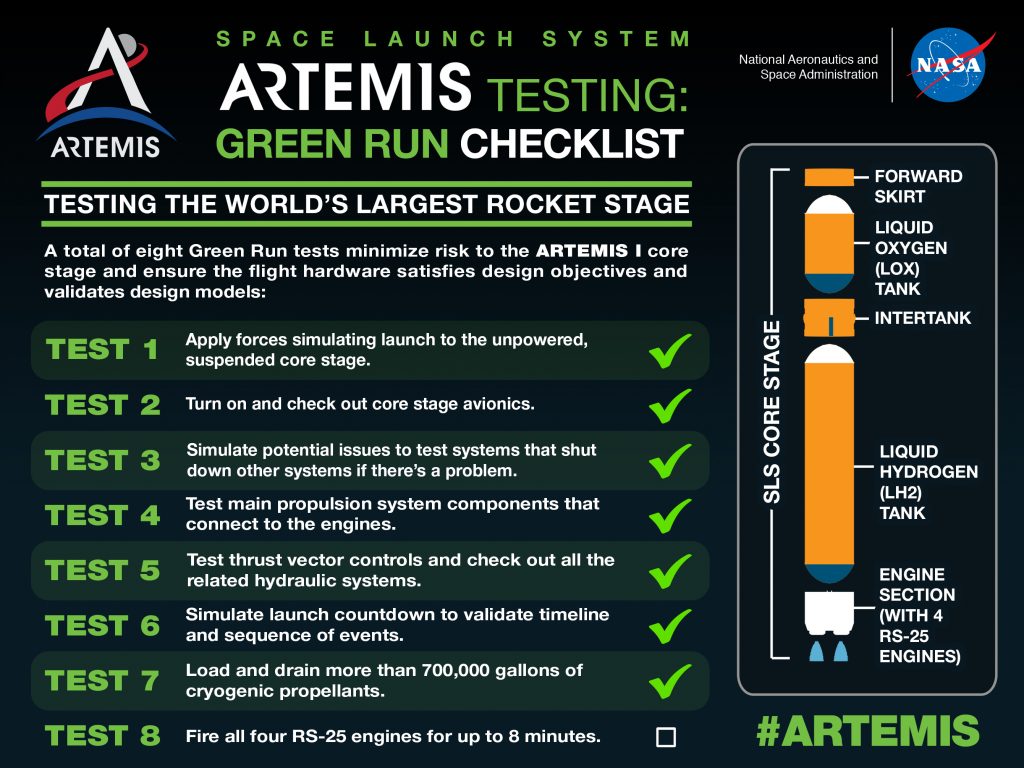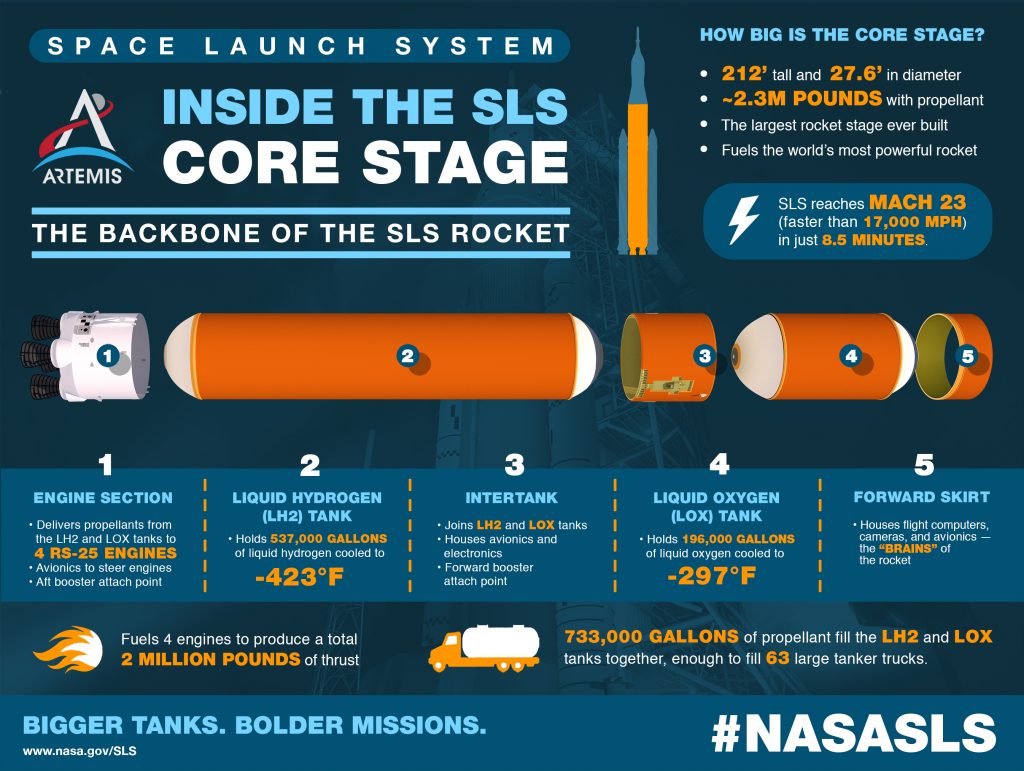The hot fire is underway for the Space Launch System (SLS) rocket core stage at NASA’s Stennis Space Center near Bay St. Louis, Mississippi.
Engine ignition began at approximately six tenths of a second before T-0, beginning with Engine 1, then Engines 3, 4, and 2 ignited in sequence a few hundredths of a second apart. The test is expected to last about 8 minutes and will include three different power levels for the engines, as well as two 30-second engine gimballing, or pivoting, movements to simulate flight steering commands. Depending on the rate propellant is burned the time is estimated to range from 485 to 493 seconds to simulate launch.
Learn more about Green Run, and check back at this blog for updates on the SLS core stage hot fire test.

 This infographic explains more about the Green Run tests that have already occurred before this final hot fire test.
This infographic explains more about the Green Run tests that have already occurred before this final hot fire test. This infographic provides information on the core stage including its two large propellant tanks.
This infographic provides information on the core stage including its two large propellant tanks.